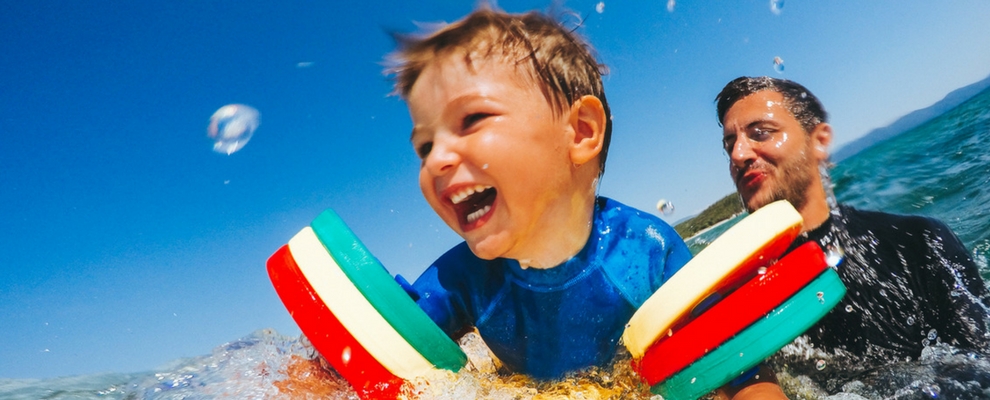Beach safety basics this summer
Health & Wellbeing -
Fun at the beach is a quintessential part of the Australian summer. But it’s also vital to remember to take care both in the sun and water. National Coastal Risk & Safety Manager, Surf Life Saving Australia, Shane Daw, reveals his top beach safety tips.
Stay between the flags
Red and yellow flags on a beach signify the presence of a lifesaving service. They indicate the section of the water which has been identified as best for swimming. “In most, if not all instances, lifeguards and surf lifesavers would have checked for rips and other hazards and set up the flags where those are minimal,” explains Shane. It’s especially important to swim between them in case you need rescuing. “They can respond far quicker than if you are swimming in another area, where potentially no-one is watching.”
It’s safer to swim with a buddy
It makes sense to swim with someone else so you can watch out for each other’s wellbeing. “At least if you go swimming with a friend, you can both look for hazards,” Shane reasons. If one gets into trouble, the other can raise the alarm. “One of you can call or send for help if something happens. Or depending on your own abilities, you can assist your friend,” he points out.
Look carefully for rips
These common and sometimes dangerous water currents often flow away from the shore. More people—even strong swimmers—die in rips at Australian beaches more than from any other cause. “Take a few moments and observe some areas of the ocean,” Shane advises. “Is the water darker or has sand stirred up in it? Are waves not breaking or, is water moving in a different direction to the rest of the ocean? These are some elements that could indicate a rip,” he shares.
Stay calm if you’re struggling in the water
It’s important not to panic if you find yourself in danger. “Call out for help and raise an arm if possible to signal that you require assistance,” coaches Shane. “If you’re not a strong swimmer, float and conserve your energy until help arrives,” he adds. However, if you get caught in a rip there are things you can do to help you get out of it. “The waves may return you to the shore or, try to swim parallel to the shore to escape the current.”
Obey important warning signs
Besides the red and yellow flags, there are other signs you should pay attention to at the beach. “Yellow and black diamond signs let you know to beware of the specific hazards shown,” Shane clarifies. “Lifeguards and lifesavers may also put up signs if there are other things to look out for, like dangerous surf or marine stingers,” he tells.
Sun safety is essential
Protect yourself from the sun’s harmful rays, even on cloudy days. Be SunSmart and wear a wide-brimmed hat, sunglasses, rashies, long clothes and sunscreen rated SPF30+ or more. Another good idea is to shade yourself with shelter items like an umbrella. Visit the Cancer Council Shop for a range of recommended sun-protection products. Lastly, don’t forget to drink plenty of water to stay hydrated in the heat.
Check for skin cancer
Two in three Australians are diagnosed with skin cancer by the age of 70, with most types caused by exposure to the sun. Skin checks play a vital role in reducing loss of life from skin cancers, such as deadly melanoma. TAL is offering free skin checks across Australia this summer. Make sure you check the TAL website for a SpotChecker location.
Get SpotChecked this summer
SpotChecker can identify any freckles, moles or blemishes which may be cause for concern. A visit is especially important if you don’t check your own skin each month, or have it examined regularly by your doctor. Those who spend a lot of time outdoors or have pre-existing medical conditions are most at risk.
Visit BeachSafe by Surf Life Saving Australia for more beach safety tips, and TAL for all your insurance needs.
